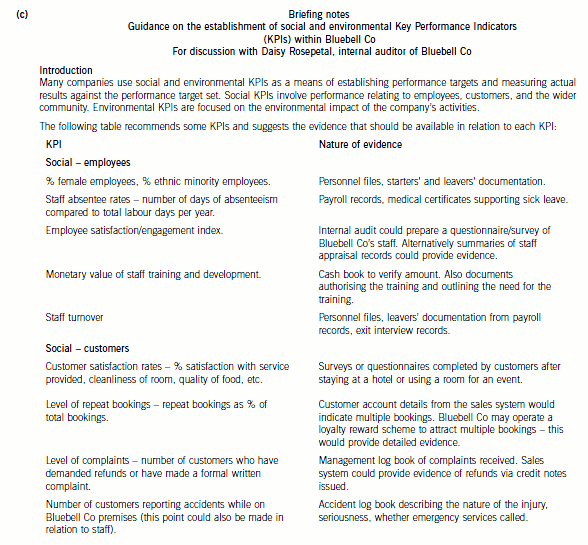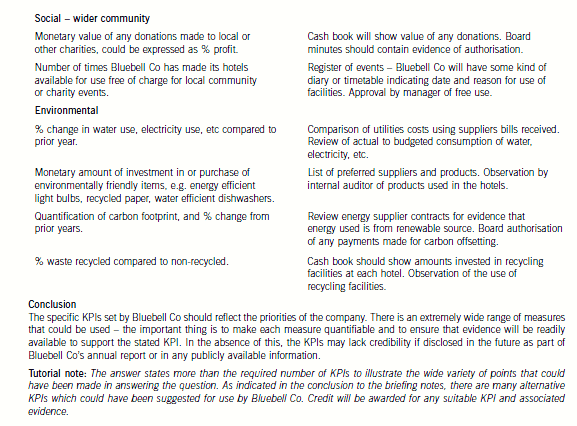2020年浙江ACCA考试准考证打印时间考前两周
发布时间:2020-08-14
2020年浙江ACCA考试准考证打印时间来啦,报考的小伙伴们你准备好了吗?为了帮助大家更好的备考,下面51题库考试学习网就给大家分享分享2020年浙江ACCA试准考证打印相关内容,想要了解的小伙伴赶紧来围观吧。
ACCA考试准考证打印步骤:
(1)ACCA考试学员需登陆www.accaglobal.com
(2)点击MYACCA后登入您的学员号和密码进入
(3)点击左侧栏里EXAM ENTRY&RESULTS进入
(4)点击EXAM ATTENDANCE DOCKET生成页面打印即可
请仔细阅读准考证上EXAMINATION REGULATIONS和EXAMINATION
GUIDELINES,务必严格遵守。ACCA考试学员请仔细核对的考试地点,仔细看准考证上的地址,以免走错考场。
考生特别注意:
在考前两周,可以登陆MYACCA里打印准考证(准考证是学员考试必带的证明,请重视;打印准考证数量须和考试科数相同)。因邮寄的准考证收到时间较晚,建议提前打印好准考证,仔细核对报考科目和考试地点有无错误。
考试注意事项:
1.考前必带证件:身份证、准考证。
考试科目必须与准考证一致,考试中心编号必须与准考证一致,不可以在准考证上乱涂乱写。考场中的每一个桌子上都标有编号,必须确认自己的桌子编号与准考证上的编号相同,如果参加了多科考试,必须注意每一科考试的考场桌子编号的变化,如果没有坐在正确编号的桌子上考试,那么答题册将被宣告无效。
2.考试必备文具:黑色圆珠笔、小尺、铅笔、橡皮、计算器(单功能)、手表等(笔试)。
3.请考试学员尽量提前半小时到场(开考后一个小时后不允许进入考场)。
4.进入考场请仔细听考官所讲的考试规则,以免在考试中出现问题。在监考官宣布考试开始前,请勿打开试卷。请确认所发试卷是否正确。每位学员将会收到:试卷、答题本、机读卡、坐标纸(若有画图题),若有任何问题,请举手示意监考官。
5.规定ACCA考试学员进入考场后,必须把通讯设备及所携带的资料、书包等一并放置在监考官指定的位置并按照准考证上标明的考场及座位号就座。请注意不能携带手机到座位上,即使已经关机也不行。
6.考试正式开始前,必须用黑色圆珠笔填写答题册前面的具体信息:
学员ID和名字
桌子编号
考场编号
考试科目编号和版本
在考试结束前,必须在答题册封皮及答题页上方辨明已答题目的题号。
考生必须确认考试中所有答题册中的详细信息都填写完毕,考试结束后都不会再有多余时间填写以上信息。
以上是关于2020年浙江ACCA考试准考证打印相关内容,小伙伴们都清楚了吗?如果想要了解更多关于ACCA 的资讯,敬请关注51题库考试学习网!
下面小编为大家准备了 ACCA考试 的相关考题,供大家学习参考。
A new internal auditor, Daisy Rosepetal, has recently joined Bluebell Co. She has been asked by management to
establish and to monitor a variety of social and environmental Key Performance Indicators (KPIs). Daisy has no
experience in this area, and has asked you for some advice. It has been agreed with Bluebell Co’s audit committee
that you are to provide guidance to Daisy to help her in this part of her role, and that this does not impair the
objectivity of the audit.
(c) Recommend EIGHT KPIs which could be used to monitor Bluebell Co’s social and environmental
performance, and outline the nature of evidence that should be available to provide assurance on the
accuracy of the KPIs recommended. Your answer should be in the form. of briefing notes to be used at a
meeting with Daisy Rosepetal. (10 marks)
Note: requirement (c) includes 2 professional marks.


(c) Identify and evaluate other strategic options ONA could consider to address the airline’s current financial and
operational weaknesses.
Note: requirement (c) includes 2 professional marks (10 marks)
(c) Within the strategy clock, ONA might consider both differentiation and focus. A differentiation strategy seeks to provide
products or services that offer different benefits from those offered by competitors. These benefits are valued by customers
and so can lead to increased market share and, in the context of ONA, higher seat utilisation. Differentiation is particularly
attractive when it provides the opportunity of providing a price premium. In other words, margins are enhanced through
differentiation. Air travellers may be willing to pay more to travel with an airline that offers seat allocation and free in-flight
food and drinks.
However, such a broad-based differentiation strategy may be inappropriate for ONA because of the need to service both
business and leisure travellers. Consequently, the potential strategy also has to be considered in the context of the two sectors
that the company perceives that it services. In the regional sector a focused differentiation strategy looks particularly attractive.
Here, the strategy focuses on a selected niche or market segment. The most obvious focus is on business travel and building
the company’s strengths in this sector. This focus on the business traveller might be achieved through:
– Ensuring that flight times are appropriate for the business working day. This is already a perceived strength of the
company. This needs to be built on.
– Providing more space in the aircraft by changing the seating configuration – and the balance between business and
standard class. ONA currently has a low seat occupancy rate and a reduction in seat capacity could be borne.
– Fewer passengers in the aircraft may also lead to improved throughput times. Loading and unloading aircraft is quicker,
minimising the delays encountered by the traveller.
– Providing supporting business services – lounges with fax and internet facilities.
– Speeding the process of booking and embarkation (through electronic check-in), so making the process of booking and
embarkation easier and faster.
– Providing loyalty schemes that are aimed at the business traveller.
Although this focused differentiation is aimed at the business customer it is also likely that particular aspects of it will be
valued by certain leisure travellers. Given the strong regional brand (people from Oceania are likely to travel ONA) and the
nature of the leisure travel in this sector (families visiting relatives) it seems unlikely that there will be a significant fall off in
leisure travel in the regional sector.
In the international sector, the strategic customer is less clear. This sector is serving both the leisure and business market and
is also competing with strong ‘no frills’ competitors. The nature of customer and competition is different. A strategy of
differentiation could still be pursued, although perhaps general differentiation (without a price premium) may be more effective
with the aim of increasing seat occupancy rate. This sector would also benefit from most of the suggested improvements of
the regional sector – providing more space in aircraft, faster passenger throughput, electronic check-in etc. However, these
small changes will not address the relatively low flight frequency in this sector. This could be addressed through seeking
alliances with established airlines in the continental countries that it services. Simple code share agreements could double
ONA’s frequencies overnight. Obviously, ONA would be seeking a good cultural fit – the ‘no frills’ low-cost budget airlineswould not be candidates for code shares.
ONA’s perception of market segmentation, reflected in splitting regional from international travel and distinguishing leisure
from business appears to be a sensible understanding of the marketplace. However, it might also be useful for them to
consider on-line customers and commission customers (travel agents) as different segments. Perceiving travel agents as the
strategic customer would lead to a different strategic focus, one in which the amount and structure of commission played an
important part.
Finally, whichever strategy ONA adopts, it must continue to review its operational efficiency. An important strategic capability
in any organisation is to ensure that attention is paid to cost-efficiency. It can be argued that a continual reduction in costs
is necessary for any organisation in a competitive market. Management of costs is a threshold competence for survival. ONA
needs to address some of the weaknesses identified earlier in the question. Specific points, not covered elsewhere, include:
– Improved employee productivity to address the downward decline in efficiency ratios.
– Progressive standardisation of the fleet to produce economies of scale in maintenance and training. This should reduce
the cost base.
– Careful monitoring of expenditure, particularly on wages and salaries, to ensure that these do not exceed revenue
increases.
Candidates may address this question in a number of ways. In the model answer given above, the strategy clock is used –
as it uses the term ‘no frills’ in its definition and so it seems appropriate to look at other options within this structure. However,
answers that use other frameworks (such as Ansoff’s product/market matrix) are perfectly acceptable. Furthermore, answerswhich focus on the suitability, acceptability and feasibility of certain options are also acceptable.
(b) Identify and discuss the appropriateness of the cost drivers of any TWO expense values in EACH of levels (i)
to (iii) above and ONE value that relates to level (iv).
In addition, suggest a likely cause of the cost driver for any ONE value in EACH of levels (i) to (iii), and
comment on possible benefits from the identification of the cause of each cost driver. (10 marks)
(b) A cost driver is the factor that determines the level of resource required for an activity. This may be illustrated by considering
costs for each of the four levels in Order Number 377.
Unit based costs:
Direct material costs are driven by the quantity, range, quality and price of materials required per product unit according to
the specification for the order.
Direct labour costs are driven by the number of hours required per product unit and the rate per hour that has been agreed
for each labour grade.
Batch related costs:
The number of machine set-ups per batch is the cost driver for machines used.
The number of design hours per batch is the cost driver for design work.
Product sustaining costs:
The number of marketing visits to a client per order is the cost driver for marketing cost chargeable to the order.
The number of hours of production line maintenance per order is the cost driver for production line cost.
Business sustaining costs:
These costs are absorbed at a rate of 30% of total cost excluding business sustaining costs. This is an arbitrary rate which
indicates the difficulty in identifying a suitable cost driver/drivers for the range of residual costs in this category. Wherever
possible efforts should be made to identify aspects of this residual cost that can be added to the unit, batch or product related
analysis.
The cost drivers are useful in that they provide a basis for an accurate allocation of the cost of resources consumed by an
order. In addition, investigation of the cause(s) of a cost driver occurring at its present level allows action to be considered
that will lead to a reduction in the cost per unit of cost driver.
Examples of causes that might be identified are:
Material price may be higher than necessary due to inefficient sourcing of materials. This may be overcome through efforts
to review sourcing policy and possibly provide additional training to staff responsible for the sourcing of materials.
The number of machine set-ups per batch may be due to lack of planning of batch sizes. It may be possible for batch sizes
in this order to be increased to 1,250 units which would reduce the number of batches required to fulfil the order from five
to four. This should reduce overall costs.
The amount of production line maintenance (and hence cost) required per order may be reduced by examining causes such
as level of skill of maintenance carried out – by GMB’s own staff or out-sourced provision. Action would involve re-training of
own staff or recruitment of new staff or changing of out-source providers.
(alternative relevant examples and discussion would be acceptable for all aspects of part (b))
声明:本文内容由互联网用户自发贡献自行上传,本网站不拥有所有权,未作人工编辑处理,也不承担相关法律责任。如果您发现有涉嫌版权的内容,欢迎发送邮件至:contact@51tk.com 进行举报,并提供相关证据,工作人员会在5个工作日内联系你,一经查实,本站将立刻删除涉嫌侵权内容。
- 2020-08-15
- 2020-01-10
- 2020-01-10
- 2020-09-04
- 2020-09-04
- 2020-01-09
- 2021-01-03
- 2020-01-10
- 2020-01-08
- 2021-04-17
- 2020-01-10
- 2020-08-15
- 2020-09-05
- 2020-01-10
- 2021-04-17
- 2020-09-04
- 2020-09-03
- 2020-01-10
- 2020-09-04
- 2020-01-09
- 2020-01-10
- 2020-12-24
- 2021-01-01
- 2020-01-10
- 2020-08-15
- 2020-09-04
- 2020-12-24
- 2021-01-01
- 2020-08-15
- 2020-01-08